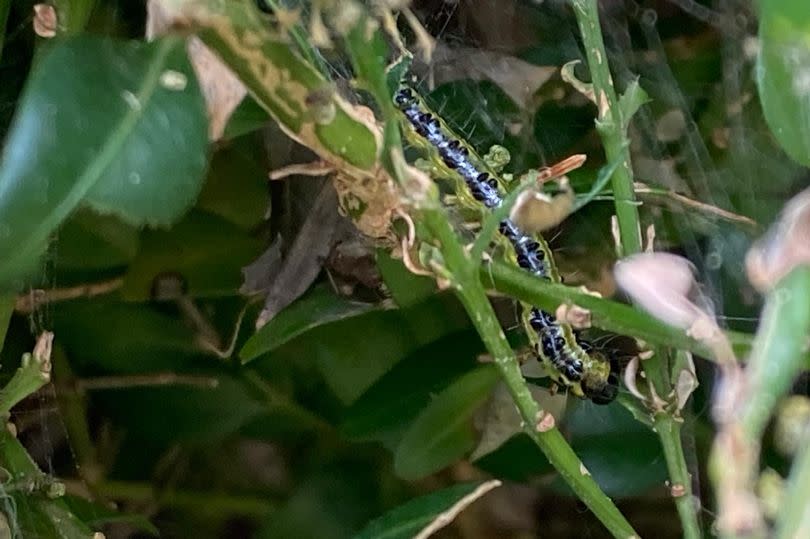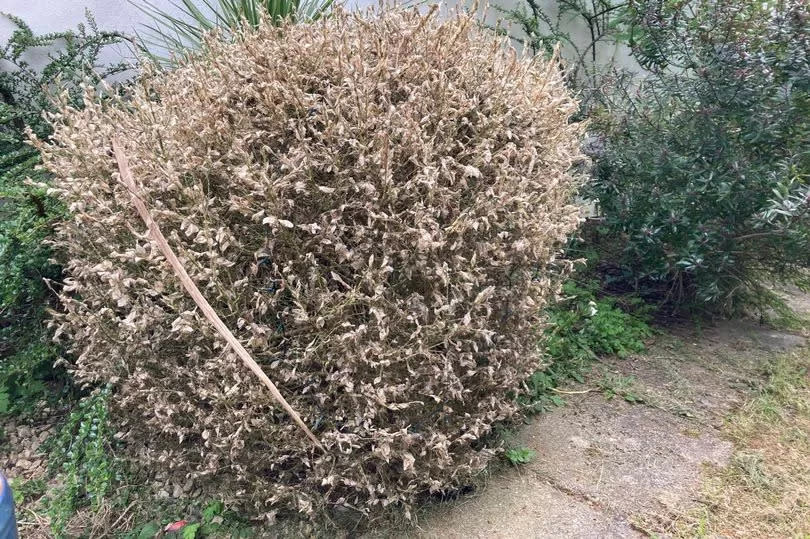Warning issued as caterpillars spread across UK and attack popular plant

A caterpillar that is killing off some of our most favourite plants is becoming increasingly common in UK gardens. Box caterpillars can completely defoliate box plants quickly and a mild winter is being blamed for them increasing in numbers.
The Royal Horticultural Society say that the insects are relatively new to Britain, but have spread quickly across large parts of the UK and Ireland. Several gardeners in Wales have reported whole hedges being wiped out.
The caterpillars create cobweb-like webbing over their feeding area, and devour the box leaves. After around a month, the caterpillar forms a chrysalis and emerges as a box tree moth, which then mates, perpetuating the cycle.
READ MORE: 'I went to a food festival surrounded by bluebells and forest where chefs cook over open flames'
READ MORE: Hundreds of red kites turn up at this Welsh farm every day
Box tree caterpillars can be a problem from spring to autumn, producing multiple generations. The caterpillars spend the winter among box foliage, resuming feeding the following spring. They are native to east Asia and became established in Europe in 2007.
The RHS says that the first adult moths arrived in Britain in 2007, but were not found in private gardens until 2011, found in gardens in the Home Counties. By the end of 2014 the moths had become established in parts of London and have now spread to most parts of the UK. For the latest Welsh news delivered to your inbox sign up to our newsletter
Cardiff gardener Alison Farmer said: "I had a whole hedge of box plants that have been completely ruined. I had no idea what had caused it until I did a bit more research."

The RHS says gardeners are likely to become aware of box tree caterpillar when they notice defoliation or find webbing and caterpillars on box plants. They say:
The caterpillars eat box leaves and produce webbing over their feeding area. Plants may also show patches of dieback, which can be especially apparent on trimmed plants.
Newly hatched caterpillars are greenish-yellow, with black heads. Older caterpillars reach up to 4cm (1¼in) in length and have a greenish/yellow body with thick black and thin white stripes along the length of the body
Caterpillars are also capable of stripping bark
The adult moth usually has white wings with a faintly iridescent brown border, although the wings can be completely brown or clear. The moth has a wingspan of around 4cm (1¼in)
The pale yellow, flattish eggs are laid sheet-like, overlapping each other, on box leaves. These are very difficult to find
So what can you do to stop them? The advice from the experts is to check box plants frequently from early spring onwards so action can be taken before a damaging population has developed.
They say that pesticides are not likely to work because it will only be successful if the entire plant can be reached. The advice is to remove the caterpillars by hand.
Gardeners' World says: "You can try to remove the caterpillars by hand if the infestation is small or you only have a few plants – you will need to do this every day once signs of their presence have been spotted, and check deep within the plant. You can also prune out the stems covered in webbing, using secateurs."

 Yahoo News
Yahoo News 
